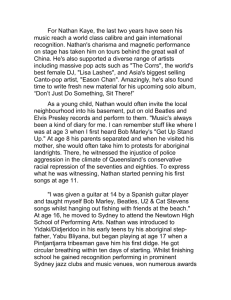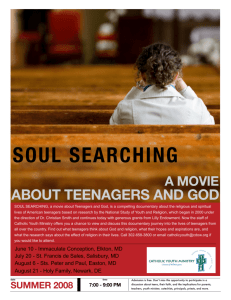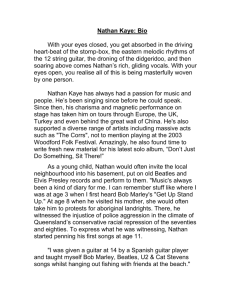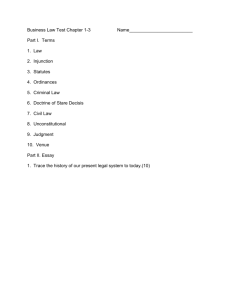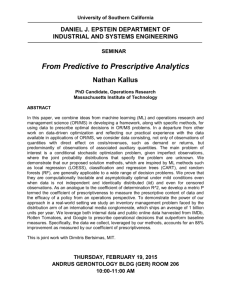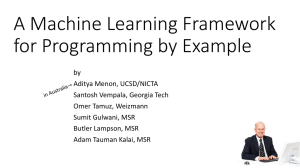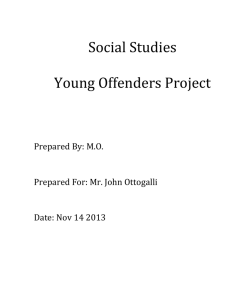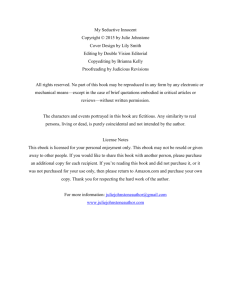Choices, Choices, Choices
advertisement
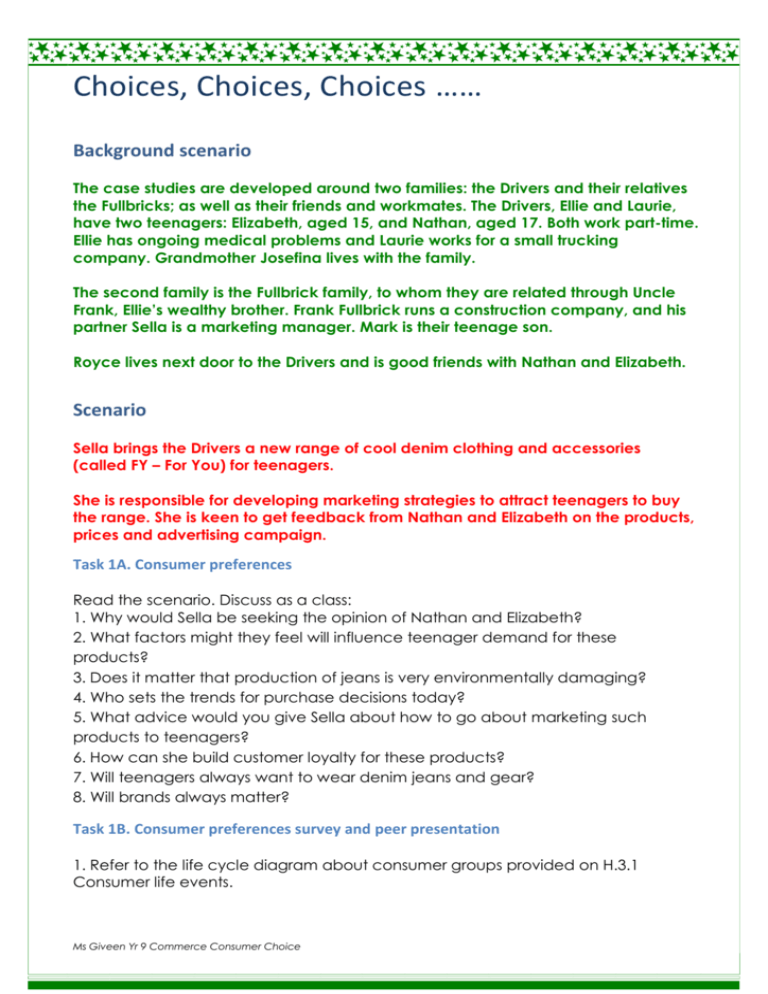
Choices, Choices, Choices …… Background scenario The case studies are developed around two families: the Drivers and their relatives the Fullbricks; as well as their friends and workmates. The Drivers, Ellie and Laurie, have two teenagers: Elizabeth, aged 15, and Nathan, aged 17. Both work part-time. Ellie has ongoing medical problems and Laurie works for a small trucking company. Grandmother Josefina lives with the family. The second family is the Fullbrick family, to whom they are related through Uncle Frank, Ellie’s wealthy brother. Frank Fullbrick runs a construction company, and his partner Sella is a marketing manager. Mark is their teenage son. Royce lives next door to the Drivers and is good friends with Nathan and Elizabeth. Scenario Sella brings the Drivers a new range of cool denim clothing and accessories (called FY – For You) for teenagers. She is responsible for developing marketing strategies to attract teenagers to buy the range. She is keen to get feedback from Nathan and Elizabeth on the products, prices and advertising campaign. Task 1A. Consumer preferences Read the scenario. Discuss as a class: 1. Why would Sella be seeking the opinion of Nathan and Elizabeth? 2. What factors might they feel will influence teenager demand for these products? 3. Does it matter that production of jeans is very environmentally damaging? 4. Who sets the trends for purchase decisions today? 5. What advice would you give Sella about how to go about marketing such products to teenagers? 6. How can she build customer loyalty for these products? 7. Will teenagers always want to wear denim jeans and gear? 8. Will brands always matter? Task 1B. Consumer preferences survey and peer presentation 1. Refer to the life cycle diagram about consumer groups provided on H.3.1 Consumer life events. Ms Giveen Yr 9 Commerce Consumer Choice 2. Form class groups of 3-4. Select one of these consumer groups at a different life stage: • primary students (6-12 years) • secondary students (13-18 years) • young adults (19-25 years) • adults (26-45 years) • pre-retirees (46-65 years) • retirees (66 years+). These consumer groups are also known as “target markets”, and their characteristics form a “consumer profile”. N.B. Different companies or organisations may define their markets differently. 3. As a class develop a set of survey questions that should cover five recent purchases of goods and services and reasons for these purchase decisions. Survey five to ten people from your allocated consumer group. Task 1C. Collation and presentation of survey data 1. Present what you have learned about your consumer group from the survey in Task 1B to the class, e.g. as a poster, multimedia presentation, newspaper article or role-play. Use illustrations where possible. 2. Examine H.3.1 Consumer life events. Choose a member of the Driver family or their relatives in another stage of the consumer life cycle. Explain how their consumer choices are likely to be different to the group you have studied. Suggest five goods or services popular with this new group. Describe the factors that may influence their decisions. Task 1D. Influencing consumer decisions 1. Brainstorm deliberate tactics used by businesses to reach and influence their target market, e.g. product placement in a television show, layout of products or signage in a store. Provide specific examples of these tactics, including addressing how they are trying to influence consumer choice, e.g. impulse buying. 2. As a class, examine a range of magazines. Who is the target market of each magazine? How is this reflected in the products and services advertised and the advertising strategies used? 3. Discuss how strategies or tactics might differ for different consumer groups. Give reasons. 4. Discuss, with reference to the consumer groups that have been identified, the advantages and disadvantages of consumer profiles. Ms Giveen Yr 9 Commerce Consumer Choice H.3.1. Consumer Life Events Ms Giveen Yr 9 Commerce Consumer Choice H.3.2 Life events that impact on spending and saving • Royce wants to start saving for a house, so he stays home on Friday nights. • Josefina spends $5,000 on a “Go Fer” motorised vehicle to allow her to go to the shops and her Bridge games. • Nathan spends $2,000 on a new sound system for his car. • Lana, Elizabeth’s cousin, spends $800 on two pairs of new Italian shoes for her new job. • EIlie has signed up for a $40 per month gym deal. • Frank and his wife buy a holiday home worth $300,000. • Tina, a single mum living next door, works 10 hours per week and gets $150 from Centrelink. She wins $20,000 and buys a car. • Thomas, Nathan’s mate from TAFE, spends $50 a week on the pokies, because he wants to win enough money to buy a boat. • Frank’s son Mark has worked hard at school this year, so Frank decides to give him $4,000 spending money for “Schoolies” and pays for his accommodation. • Laurie has three credit cards, and has increased the limit for each to $10,000 in case of accident or emergencies. He uses one card, now up to $8,000, for household items, and another, now up to $9,900 for the car and holidays. • Elizabeth has saved $3,000 and invests it in Qantas shares. • Helen, a friend of Nathan, gets a back payment from Centrelink for $8,500. She gives it to her uncle so he can buy her a car. Source: http://www.commbank.com.au/about-us/download-printed-forms/NSW-Financial-Literacy-Materials-Module3.pdf accessed 23/04/2012 Ms Giveen Yr 9 Commerce Consumer Choice

